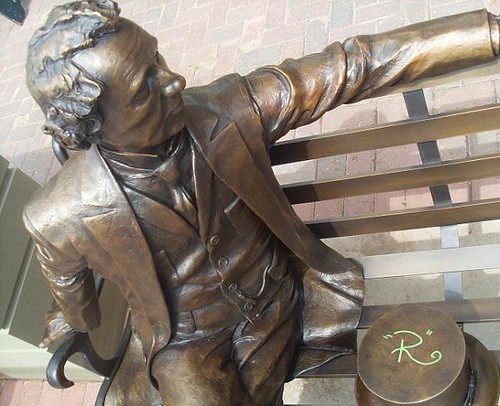CHARLOTTETOWN — Public art is not quite as taboo as politics or religion, but the inclusion of art in the public space, ostensibly approved by some level of government, has been known to be a divisive issue across Canada. Take, for example, Dennis Oppenheim’s sculpture “Device to Root Out Evil” which was the source of debate at Stanford, eventually finding a home in Vancouver, only to be uprooted and moved to the Calgary’s Ramsay neighbourhood in September 2008. The inverted church, with its steeple jabbed into the ground, elicited cheers and jeers from across the social and political spectrum. Art controversy is not new, stretching back to some of the most recognizable pieces in classic history. Michelangelo’s David has been reproduced au naturel, as the original still stands, and with a strategically placed fig leaf, especially where the target audience is less bawdy than 16th century Italy. Then, as today, the issue of what defines art, especially in the public space, is as broad as the creativity of the artists. As Michelangelo so aptly demonstrated, Renaissance masters were never far from their artistic feuds, whether among themselves and their discerning clientele or the public at large.
These thoughts struck me as I walked past Charlottetown’s newest public art display, a copper statue of Sir John A. MacDonald sitting on a bench at the corner of Queen and Richmond Streets. Since its installation earlier this year, I have witnessed countless pedestrians interacting with this brass replica. As unassuming as a Father of Confederation might be in Charlottetown, the officially proclaimed Birthplace of the Confederation, even Sir John A. MacDonald could not be spared a spate of controversy. Whether it was the $80,000 price tag or the idea that American artist, Michael Halterman, was chosen to create the federally funded piece, controversy is alive and well in the artistic incubator that is Charlottetown.
Controversy is fickle and, while the public eye was focused on the seated Sir John A., it was a fleeting fascination that quickly lost its lustre. Charlottetown is home to a number of public art exhibits, many of which have faded into the landscape of the city centre. Perhaps what we need is a public art policy to accentuate the homage that the Island pays to its arts community and to channel that reverence into permanent exhibition spaces following the example of the Charlottetown mice. Maybe then we will heed the beckoning call of Charlottetown’s most prominent tribute.
Photo is unattributed.


One comment
The replica bronze chairs installed in King’s Square last year certainly stirred up controversy too.